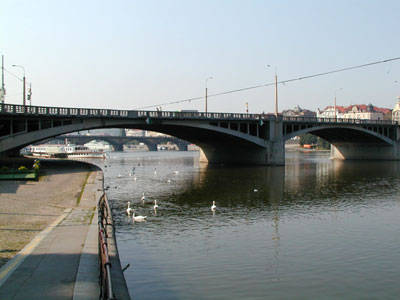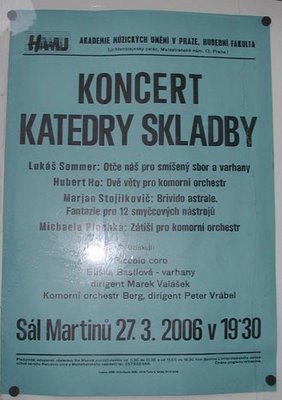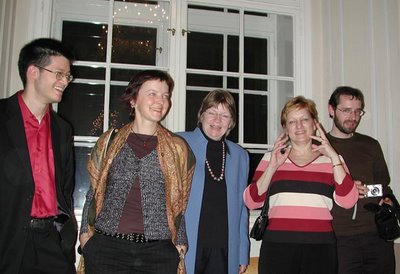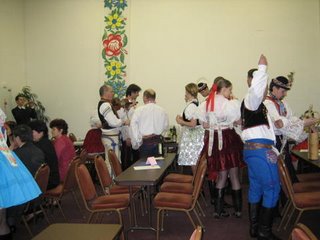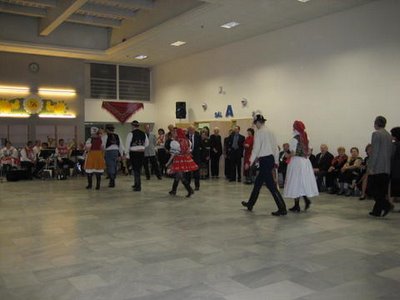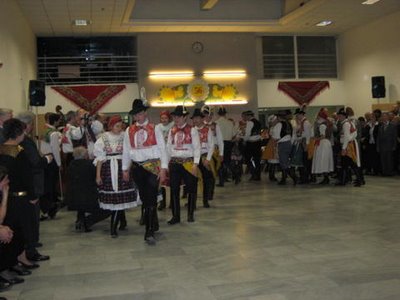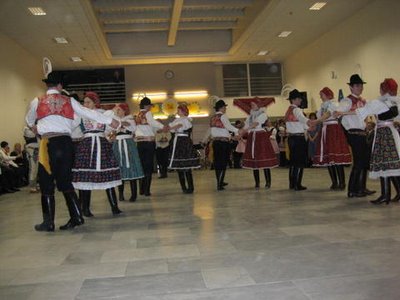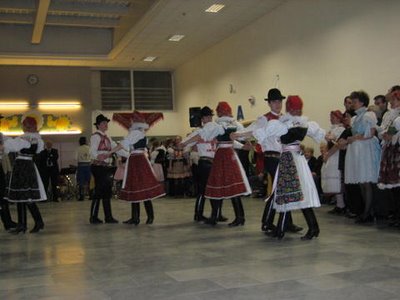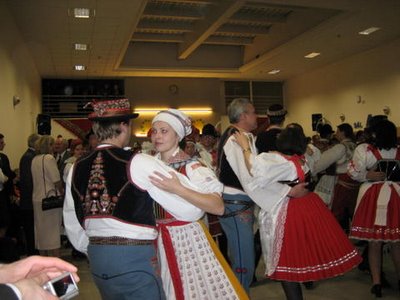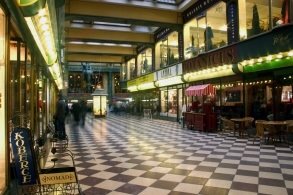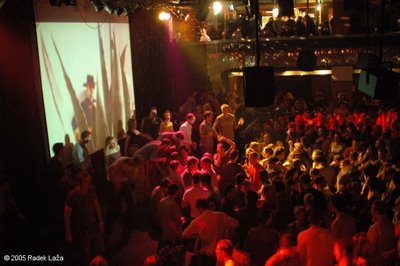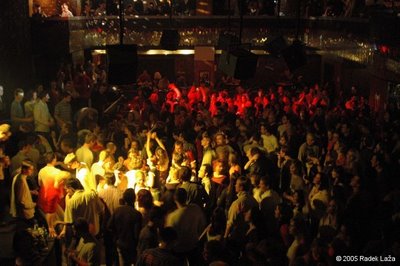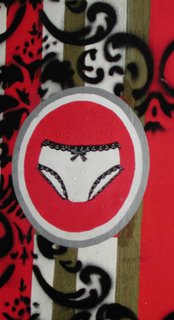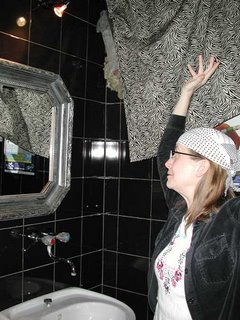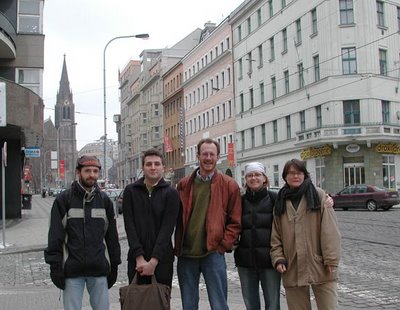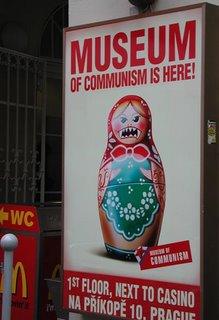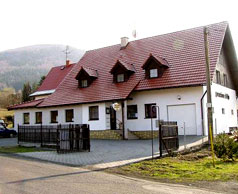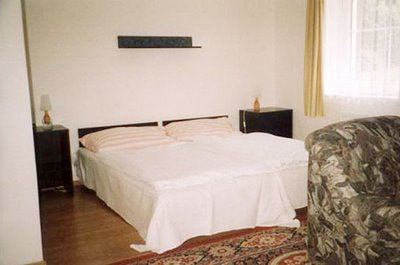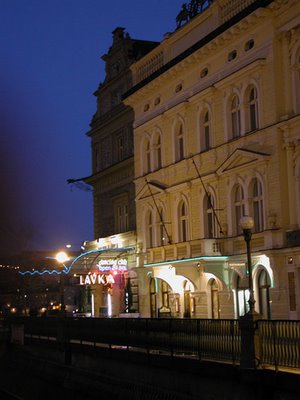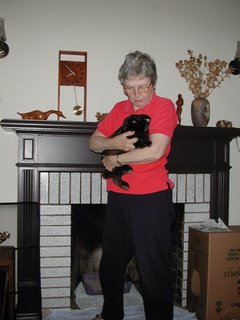It’s time to continue the saga of the Ski Adventure, although I suppose some of you would rather hear about how I spent my day at the library reading: 1) what František Götz thought distinguished Ivan Goll’s surrealist movement from André Breton’s and 2) all about prostitution in Prague during the 1920s. (Well, perhaps later; I’m not done with the latter topic yet and I’m sure I could improve my grasp of Götz’s nuances.)
Yes, skiing. Was I skiing just a few days ago? I could still feel it on Tuesday, but I think the leg muscles have gone all flabby again. Too bad we didn’t have all week (and a larger budget) to get me back into prime condition.
In our last episode, Jesse and I were on the chair lift and I had just dropped my valuable purple glove from REI somewhat below pole #5 and a road not marked on our map of the area. You can see the forlorn glove and other, more remarkable images on
Jesse’s photo essay of our trip.When we got to the top of the mountain, we were met by a collection of folk-style buildings housing various shops and restaurants. For some reason, everything was kind of uphill from where we stood after getting off the lift, or at least everything in the direction Jesse thought we should go (since he had been there before). This proved to be rather prophetic as to how I was going to spend the rest of my weekend.
Our plan was to do downhill skiing, as this is the only kind I know how to do (Jesse claimed to be a relative beginner at it, but this is not actually true, as I suspected from the start). One would think that downhill skiing would involve going downhill, or at least that it would mainly mean going that way. Maybe 90-95% downhill? That’s been my past experience, which Jesse at least claimed to think ought to be the case.
Yes, part of learning to do downhill does involve learning how to walk sideways up mountains. This is because beginners (unless they are incredibly timid or incredibly fast learners) fall frequently, leaving poles and usually at least one ski somewhere further up the hill. While I never became an expert at this, I did get plenty of practice at it my first year skiing. But actually, I made good progress on the skiing part and soon didn’t have to spend all that much time going uphill to retrieve my gear. My friend Wes, the main person responsible for my ability to ski tolerably, taught me that if you don’t fall now and then you aren’t challenging yourself enough, and I think this is quite true. Most winters I don’t challenge myself enough, and my one or two falls seldom involve climbing around the landscape (unless I hit ice and go flying). So—I can climb slowly up a steepish slope in my skis if necessary, but never properly learned any other means of going uphill. This was where Jesse’s vast cross-country experience was going to leave me behind all weekend, because Czech downhill skiers apparently spend a lot of time going up hills large and small.
Thus, instead of our getting off the lift and skiing gracefully to some sort of downward slope, we headed uphill. This did not make me look good. My progress was slow and sweaty.
At some point we actually went down an easy hill. I started to feel like I knew what I was doing again. Then I noticed the ski lift.
I must have led a sheltered existence during my American life. The vast majority of my experience has been in the Lake Tahoe area, where everything is high quality: the snow, the trails, the lifts. (Well, perhaps not the food…) I’ve also skied in Pennsylvania, which is more than a few steps down in quality as regards the snow and the trails, but the equipment has been quite satisfactory.
To put it bluntly, I had only ridden chair lifts. While it’s possible to fall getting on or off a chair lift (and, of course, I have done both), it’s not something one usually does unless a complete beginner. Furthermore, chair lifts are a very restful way of going up mountains. You sit back, watch the scenery, and perhaps converse. Maybe you wipe your nose or readjust your goggles.
The lift before us had metal things in the general shape of an anchor, against which people leaned. I observed them closely before making my attempt. I still managed to fall off (my memory refuses to dredge up whether it was just once or multiple times), as if one hasn’t got the skis pointed straight ahead when attaching to the anchor-like apparatus, the whole thing gets messed up and the guilty party drags his or her partner off in an unwanted direction before ignominiously having to let go and roll or stagger back down to the starting point.
By the time we were successfully headed back up the mountain, I was rather tense, having that unnerving sensation that at any moment my skis might veer to the side and land us in a difficult spot. Jesse assured me that this was an absurdly primitive type of lift and that this was much too long of an ascent for something of its type, which was thoughtful, but I didn’t notice him falling off without me.
The next type of lift was designed on a similar principle, in that its purpose was to pull the skier up the hill, but it was meant for one. In this case there was an aluminum pole with a small plastic disk at the end, all of which was attached to the cable via a bungee cord. The idea was that you grabbed hold of this pole, flung it between your legs, and were supported by the plastic disk as you skied uphill.
Well, the theory did not seem too difficult, and Jesse and the Czechs went uphill without mishap. I suppose they had all done this before.
Between getting my feet in the right area, pointing my skis straight enough ahead, managing to grab hold of the pole, succeeding in inserting it between my legs, and getting my legs closed around it before being jerked forward, there was apparently considerable room for error. If I got the first few things right, one of the later ones insisted on going wrong. The elderly lift attendant swiftly grasped that he had a complete incompetent on hand and slowed down the machinery, began handing me the pole, and so forth, but he still had to deal with my losing my balance after a couple of meters. Eventually I got up the hill, where Jesse was awaiting me with mild concern. He assured me that this type of lift was also primitive and stupid.
Nonetheless, I could see I was not giving a very impressive idea of my skills, especially since I had only skied a few times in the past two years and was very much out of practice. You would not have guessed that I had ever gone down a black diamond slope without killing myself (or even falling).
We went down a lot of short, fairly gentle runs, which at least made me feel like I still knew how to go downhill. I got the hang of the lifts, but they were less relaxing than the skiing itself (I was under the impression that one was supposed to get exercise skiing and rest on the lift, not the other way around). We had a late lunch. Feeling rather pleased with ourselves, we headed down a longer, more difficult run, which proved to have a fairly steep part mostly obscured by a cloud.
I see that I have failed to mention important meteorological details, namely that large portions of this mountain are usually obscured by clouds. I don’t mind skiing in a cloud if I know the run well, because somehow it focuses my attention marvelously, but otherwise it makes me very nervous.
I can handle steep slopes if they are fairly wide and I can see where things are in case I need to fall. (There is choosing to fall versus going out of control and falling that way; while I prefer not falling at all, falling at a slower speed involves less debris scattered over the mountain.) This slope was decidedly within my abilities, but on the more challenging side, especially with impaired visibility. I took it slowly and got down more or less without difficulty (although I have a vague notion that I may have fallen at the bottom). It was tiring, however. My knees were shaky by the end.
Unfortunately, there was a steep lift of the pole variety at the bottom. I felt confident enough as I situated myself to get on it, but things immediately began to go wrong. It didn’t occur to the lift operator to slow the speed, because anyone going up the lift had just come from a black run.
I would grab the pole and it would promptly jerk out of my hand before I could put it between my legs, or while I was doing so. If I got onto one, it would take me about ten feet before something would happen with my skis and I’d lose my balance and fall off. As it was the end of the day, I was the last person on the lift and the operator, who was about eighteen or twenty, at least had no one else waiting behind me. He was determined to get me on the lift, and kindly gave numerous instructions, mostly about keeping my skis straight. His accent was utterly unfamiliar (we were near Silesia and Slovakia), but entirely comprehensible given the basic nature of the information.
After a good while of this, during which I was forcibly realizing that I must really be tired if I couldn’t get onto the same kind of lift I’d been riding all afternoon, I got going. The hill was astonishingly steep and it was decidedly an effort to keep my skis both straight and pointed up in the air. Consequently, about thirty feet along everything went wrong again and off I went. There I was, lying stupidly across a narrow and rather vertical trail, trying to figure out what to do next as poles came past.
The lift operator was somewhat alarmed, although I made clear that I was completely undamaged. Personally, I thought I should make my way down and start again, but he thought it made more sense to climb up and rescue me. Just in case I was mistaken about my state of health, he brought along a sled.
For reasons not fully clear to me, the lift operator was convinced that, if I wasn’t hurt, I could be gotten onto the lift right there. Why he thought I could be positioned properly on a 45-degree angle when I couldn’t quite get it right on a nearly flat surface is indeed a mystery. Perhaps it was because the attempt involved repeatedly lifting me to my feet, supporting my dead weight (I couldn’t get my balance unless I was standing with my skis perpendicular to the trail instead of straight on it, and obviously if I were in the correct position I would immediately slide down the hill backwards unless propped in place and prevented), and generally displaying stereotypical masculine muscular attributes.
I’m not complaining. The lift operator was exceedingly cheerful, absurdly optimistic, and while I usually like to rely on my own physical strength, when that’s not possible I do like to have someone else’s handy.
Still, it did seem as though the lift operator wasn’t really thinking this through very well. In retrospect, I’m not sure he had any better chance of getting me onto a pole lift right there than my cousin and I had some years back in lifting my uncle off the floor onto a chair at five a.m. On the other hand, I weigh much less than my uncle did and most people do find me much more fun to hold onto than they do the average disabled senior citizen. I have my suspicions that my rescuer found the whole thing at least somewhat enjoyable.
But we couldn’t get me onto the lift, so he finally had the bright idea that I should take off my skis. I could let myself be dragged up with my poles and he would follow on foot with the skis.
This still seemed implausible to me, but I felt in no position to argue. I handed him my skis and we got me wrapped around a pole. Since I had no skis to slide on, almost immediately I was on my back, but at least I hadn’t lost my grip. I yelled that I was fine, and made my ignominious way up a long and steep hill sliding on my back and followed by the obliging lift attendant.
It could not help but remind me of the …incident… (certain of my readers will recall this) in which I unexpectedly went hurtling down a kayak chute and had to be fished out of the Vltava by one of my instructors since there were no steps along the river at that point. (I was wearing somewhat more clothing this time, however.)
In the meantime, Jesse was wondering what had become of me and whether perhaps I was going to arrive in a dismembered condition.
Fortunately, I survived the journey intact, the lift operator succeeded in climbing after me and gave me my skis, and Jesse and I proceeded to ski down the mountain to our pension and its hot water.
The following day was somewhat similar except that I fell off fewer lifts and Jesse decided that it was imperative I learn to do the herringbone properly so that I could go uphill fast enough not to be run over by all the cars and trucks that infested the top of the mountain. He did a good job of this and now I can go ten feet uphill in less than twenty minutes. This was important as in addition to the vehicular traffic, a surprising number of the lifts were uphill from where one might have expected them to start.
While I have focused on the humiliating aspects of the whole thing (and left out numerous examples of being left far behind on treks uphill), it must nonetheless be stated that if I could ski all day every day of the week, it would be hard to drag me back indoors.

